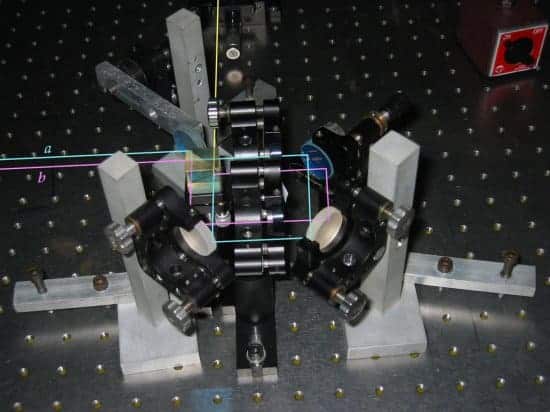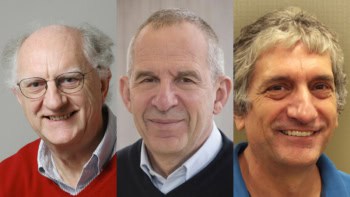A strange quantum phenomenon that could be a stumbling block to building quantum computers has been observed for the first time by physicists in Brazil. Known as entanglement sudden death (ESD), it involves the rapid decay of the "entangled" pairs of particles that will be central to the operation of quantum computers. Since the particles decay so quickly, the physicists claim that the decay cannot be reversed using the error-correction schemes that have been proposed to increase the lifetimes of entangled particles (Science 316 579).

In the weird world of quantum mechanics, entanglement means that particles can have a much closer relationship than allowed by classical physics. For instance, two photons can be created experimentally such that if one is polarized in the vertical direction, then the other is always polarized horizontally. By measuring the polarization of one of the pair, we immediately know the state of the other, no matter how far apart they are.
Whereas ordinary computers use bits of information that are either 1 or 0, quantum computers use quantum bits of information, or qubits, that can be in a superposition of both 1 and 0 at the same time. A 1 could represent, say, a horizontally polarized photon, while 0 represent a vertically polarized photon. By combining N such qubits, these could entangled to represent 2N values at the same time, which would, in principle, allow a quantum computer to outperform a classical computer for certain tasks.
However, the qubits in any practical quantum computer have to interact with their local environments, which will cause the quantum state of the qubit to change, or decay. A photon reflecting from a mirror, for example, could suffer a change to its polarization, and successive interactions could even lead to the entanglement disappearing altogether. Crucially, the gradual nature of the decay means that it should be possible to restore entanglement during the computation process using error-correction schemes.
However, it had been predicted that interactions that appear to have a small effect on a single qubit can have a devastating effect on an entangled system of two qubits. This effect — entanglement sudden death, or ESD — is so rapid and complete that error-correction schemes will not be able to restore entanglement. Now, Luiz Davidovich and colleagues at the Federal University of Rio de Janeiro have observed ESD for the first time.
In their experiment, the researchers prepared entangled pairs of photons, which were then sent along two identical paths that were separated such that there could be no mutual interaction between the photons. Each path contained optical equipment that could be used to cause a deliberate and gradual decay of the vertical polarization component of both photons. The researchers then detected both photons with the aid of interference filters to determine their degree of entanglement – or concurrence.
The researchers studied pairs of photons that were entangled in two different ways: one type had a certain combination of horizontal and vertical polarizations, while the other type had a different combination of these polarizations. Both initial states were created with the same degree of entanglement and both were subjected to the same gradual decay of vertical polarization. It turned out that the entangled pairs that were more vertically than horizontally polarized underwent ESD, whereas the pairs that where the opposite was true decayed relatively slowly as expected. Davidovich reckons that the vertically-rich entanglement suffered ESD because in this experiment, vertical polarization is a higher energy state and is therefore more sensitive to decay via interactions with the environment than is the lower-energy state of horizontal polarization.
Davidovich told Physics Web that ESD should also occur in other systems that have been proposed for use in quantum computers including trapped ions and atoms in cavities. However, he does not believe that ESD precludes the development of quantum computers. “It leads to an upper limit for the duration of the quantum computation”, he said. “Calculations must be made faster than the time for which ESD occurs”.
Davidovich explained that ESD precludes the use of error correction: “Error-correction techniques rely on entanglement. ESD implies that the quantum computer becomes classical at a finite instant of time, after which quantum error correction is no longer possible”.



